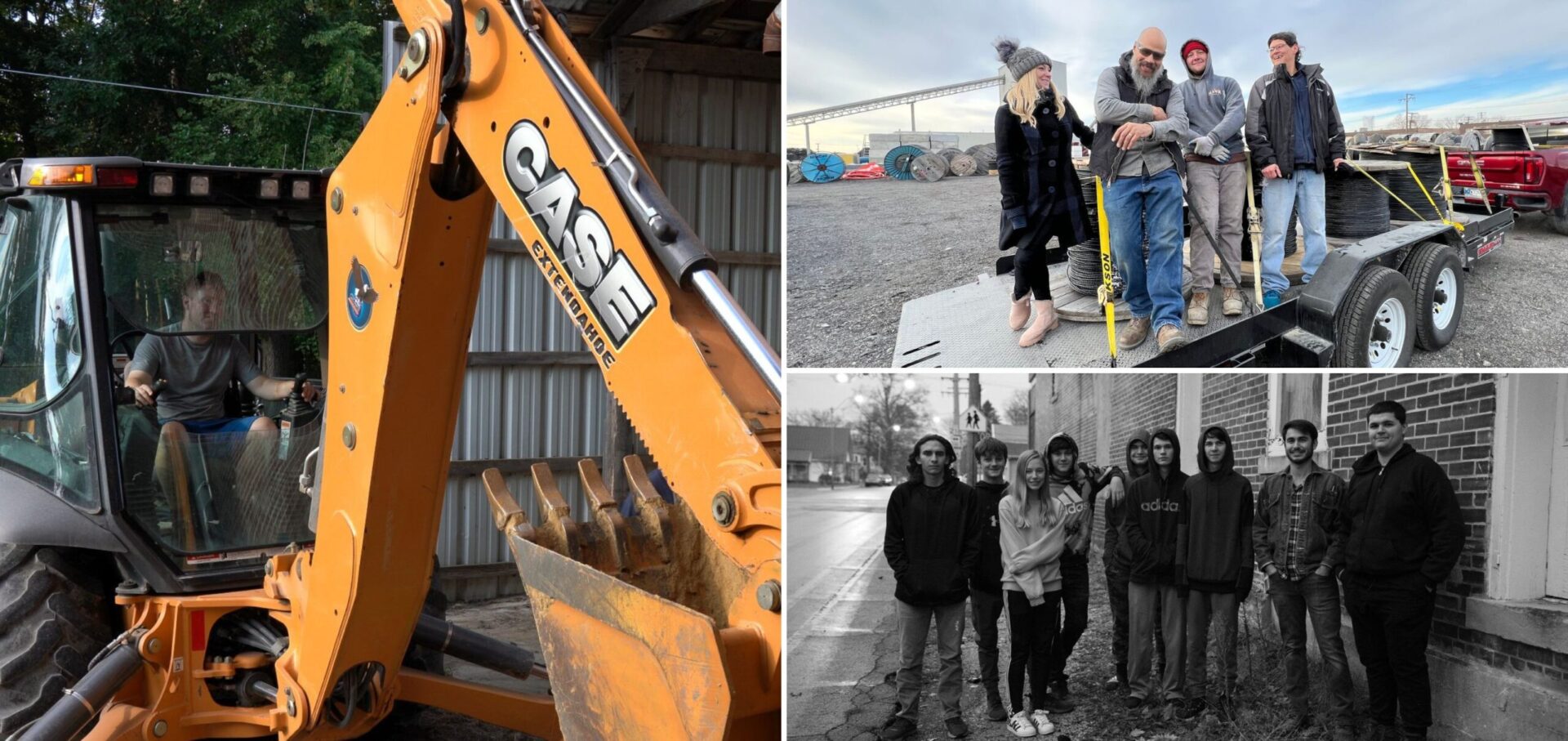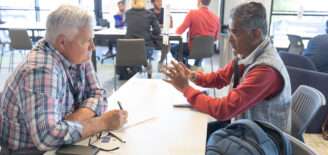Could a 100 year old Opera House in Camden, Ind. become a hard-tech mecca? This farmer thinks so, and you can help
My small town of Camden, Ind. doesn’t even have a stoplight. Some residents still drive horse-powered buggies. But that’s not an impediment to our plans to make this north central Indiana community the HardTech capital of rural America—one where our kids and families have equitable access to 21st Century opportunity while simultaneously developing the infrastructure that recruits global innovators to provide our youth with internships—all while helping to develop game-changing intellectual property that spans aerospace, ag-tech and robotics.
Seems far-fetched right? Over the past five years my team of Amish-raised carpenters and I have worked through freezing cold winters and blazing hot summers to salvage the 115-year-old Camden Opera House.
It’s been a lot of work (and money), but the building’s rehabilitation has provided more than 20 part-time jobs whilst simultaneously injecting several hundred thousand dollars into the local economy. This hard work is being done with the intent to bring the world (literally) to the doorsteps of Camden’s residents. The Opera House will serve as that venue – think of it as a basketball gym for technology and innovation.
FEATURED PHOTO CAPTIONS:
(Left) Neil Mylet operating heavy machinery!
(Top Right) Standing on the transport trailer: Angelica Larsson, “the world’s most famous truck driver,” representatives from Elite Fiber Optics – the company that donated 10 miles of fiber optics for the library and the 5G Farm projects – and construction specialist Adam Wright.
(Bottom Right) Pictured are some of the students and young carpenters who helped with hard-tech construction projects in Camden, Ind.
To accomplish this, I’ve traversed the globe from Prague to Paris and Stockholm to San Francisco, building relationships with innovators, government leaders and social media influencers who have rallied behind my vision as we work to deliver meaningful change for the 593 residents of Camden. My friends have visited us, too (so far from around 15 countries) to snap a photograph and to meet some of our community members.
In addition to my sweat equity and personal donations, I’ve committed funds to help subsidize the fiber optic cable and data services needed to increase Internet connectivity for organizations like the Camden American Legion post, senior citizen apartments, the fire station and community center.
I’ve gotten some amazing support for this project, which I’ll detail in a bit, but finishing the project will require a little more help.
If we can raise $50,000 in charitable donations for the 501c3 I started — the RuralUrban Philanthropy (dba Rural Innovation Network) — we can complete construction of a computer lab, remote telehealth pod, classroom and homework area at the Opera House.
Hitting our donation goal will make our project eligible to receive a matching sum of $50,000 in grant funds through the CreatINg Places program, a collaborative effort between the Indiana Housing and Community Development Authority (IHCDA), Patronicity and the American Association for Retired Persons. Grant funds would go towards purchasing computers, microphones and cameras for the telehealth room, wi-fi equipment, smart TVs for educational displays, tables, chairs, and pay to wrap up construction of all the rooms.
Most families in Camden can’t afford a state-of-the-art computer, but their kids would love to create content for YouTube, code new apps, and learn about hardware design. With the fusion of technology and mentors, the Opera House would provide a vibrant space for learning and opportunity.
Friends from all over the world have already stepped up to help me with this project.
Aerospace startup Viima (based in Finland) is planning to launch its 3-D printed drone in Camden and to work with local students. Viima will be donating an advanced 3-D printer so that Carroll County students can use the restored Opera House computer lab to gain first hand experience with aerospace engineering.
“What Neil is doing in Camden is just the sort of community we are looking for, creating new technology and sharing knowledge. We are really glad to be a small part of this initiative,” said Viima Co-founder and CEO Ilpo Hämäläinen.
Robotics company Helgen ( based in Ireland and Mexico) which automates shipping ports and develops autonomous machines will be teaching workshops on robotics and digital twin technology at the restored Opera House.
Zayo, one of the worlds largest fiber optic network with over 16 million miles of cable, has provided us with a 10 gigabit internet connection so bandwidth won’t be a constraint.
That robust fiber connection is huge for the Camden-Jackson Township Public Library — the smallest library in our area with the 10th smallest budget of the 257 libraries in Indiana.
“There’s very little wiggle room when it comes to programming and community outreach projects,” said Librarian Caitlyn Baird. “To think that such a small, rural community would have such innovative tech is simply unheard of, but with the tech coming to town, we hope it’ll draw more people to visit and utilize our library as more of an asset and to put Camden on the map, as they say.”
Among additional services she plans are educational workshops with speakers from Sweden and Africa.
“This will give local kids and adults, as well, the ability to access the Internet in a way they never had before, and hopefully will create more opportunity for our community as a whole,” She said.
Caitlyn and her family moved to Camden about seven years ago and were charmed by our small town life. Their only complaint? The spotty internet availability.
Finally, Don Wettrick and his team of the StartEdUp Foundation will be able to host entrepreneurship workshops at the Camden Community Center. The StarEdUp Foundation launched in 2018 in Nobelesville with one teacher inspiring students to view the world differently. It’s now statewide and has worked with more than 600 students engaged in community involvement, civic engagement and ecosystem expansion projects.
The organization hasn’t been able to launch in Camden due to a lack of adequate space and for the lack of reliable and high-speed broadband.
I like how Don describes this project as “a blueprint for rural America,” because it’s exactly right.
He says that for American kids – whether they’re in Indiana, California or Maine – to participate in digital innovation, they have to have a high-speed digital space where they can bounce ideas off each other, iterate and experiment.
And I ask: “Were better to start a trend in rural digitalization than Camden?”
As you can probably tell, this project is insanely personal to me. I had to drive an hour to upload my first YouTube video which ended up getting 2 million views. My own story reminds me of the many young people from rural Indiana towns like Camden who might never realize their full potential without the right mix of infrastructure and resources. However, it now goes much deeper for me than even that.
Over the past several years as I’ve worked on restoring the Opera House, countless families from Camden have stopped by to say hello and introduce themselves. Many of them have brought me a delicious homemade meal late at night or poured me a glass of ice cold lemonade on a scorching hot day. What I’ve realized is that this project truly has the potential to transform lives while simultaneously showing all of America on how we can unite people from rural and urban communities around technology, innovation and culture.
If you’d like to help, please reach out at neil.mylet@gmail.com.



